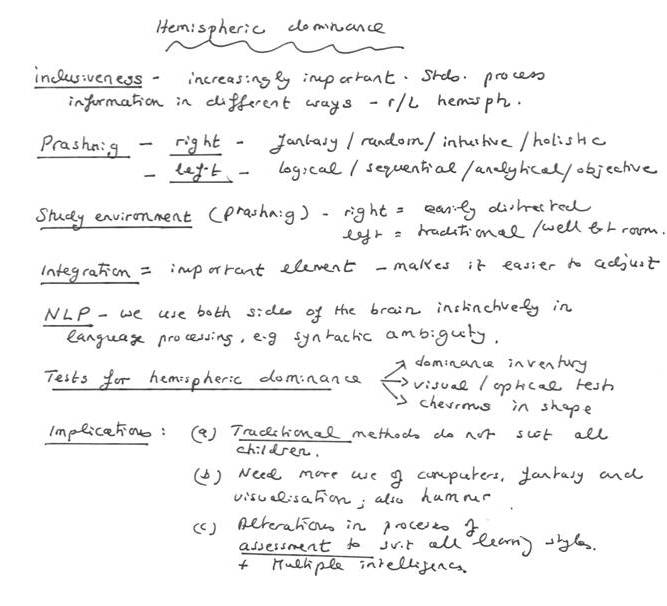|
If your notes are more like those above (i.e. linear notes), this means that you tend to take notes from your reading in a more traditional way. Linear notes are a useful means of taking notes because:
-
When you are reading longer texts, your notes can go over several pages.
-
You are less at risk of running out of paper or space.
-
There is usually plenty of extra space to add details later from your further reading, e.g. quotations.
-
Linear notes follow the way that many of us think.
-
Your notes will probably follow the order of the text (that is, they are chronological). This can be very helpful when following, and understanding, complex arguments or written texts that are not very well organised.
|
|
You may consider the following:
-
Add headings and subheadings, as well as colour and highlighting, to emphasise certain key points.
-
Even if you are happy with taking notes in a linear way, try to vary your note-taking style by trying pattern notes (spider graphs, mind maps, etc) from time to time. Have a look at the advantages of pattern notes, here.
-
You may eventually want to reduce the length of your linear notes to a set of pattern notes or a mind map, especially (for instance) if you are revising for an examination.
-
Try not to make your notes too neat or perfect; they should be a working set of notes designed to be understood mainly by you.
|
